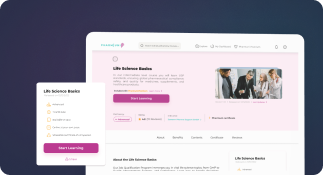Computer Validation Lifecycle
Definition
The Computer Validation Lifecycle (CVL), also known as the CSV lifecycle or system lifecycle approach, refers to the structured process used to ensure that computerized systems used in regulated environments (e.g., pharmaceutical manufacturing, clinical trials, and laboratory operations) are developed, implemented, operated, and retired in a manner that ensures data integrity, product quality, and regulatory compliance.
This lifecycle is essential for meeting regulatory requirements such as FDA 21 CFR Part 11, EU Annex 11, and GAMP 5 guidelines. It encompasses multiple phases—from initial planning and risk assessment through validation, operational use, and eventual system decommissioning.
Detailed Explanation
Purpose and Importance
The primary purpose of the Computer Validation Lifecycle is to ensure that computerized systems perform as intended and are suitable for their intended use. This is especially critical in regulated industries where system failures can compromise patient safety, product quality, or regulatory compliance. The lifecycle approach promotes a proactive, risk-based methodology that aligns with industry best practices and regulatory expectations.
Phases of the Computer Validation Lifecycle
The CVL typically includes the following key phases:
- 1. Planning: Define the scope, objectives, and responsibilities. Develop a validation master plan (VMP) or project-specific validation plan.
- 2. Requirements Definition: Document user requirements specifications (URS) and functional requirements specifications (FRS). This phase sets the foundation for testing and validation.
- 3. Risk Assessment: Identify and assess risks to data integrity, product quality, and patient safety. The results guide the depth and rigor of validation activities.
- 4. Design and Configuration: Develop or configure the system according to specifications. Design qualification (DQ) may be conducted to verify that the design meets requirements.
- 5. Testing and Validation: Execute installation qualification (IQ), operational qualification (OQ), and performance qualification (PQ) to demonstrate that the system operates as intended under real-world conditions.
- 6. Release and Go-Live: After successful validation, the system is released for operational use, with appropriate procedures, training, and documentation in place.
- 7. Operation and Maintenance: The system is monitored, maintained, and periodically reviewed. Changes are managed under change control and may require revalidation.
- 8. Retirement: When no longer needed, the system is decommissioned in a controlled manner, ensuring data is archived or migrated as necessary.
Application in Regulated Environments
The Computer Validation Lifecycle is widely applied in:
- Pharmaceutical Manufacturing: Validating Manufacturing Execution Systems (MES), Laboratory Information Management Systems (LIMS), and Enterprise Resource Planning (ERP) systems.
- Clinical Research: Ensuring compliance of Electronic Data Capture (EDC) systems and Clinical Trial Management Systems (CTMS).
- Quality Control Laboratories: Validating analytical instruments and software used for testing.
Regulatory Framework and Guidance
The lifecycle approach aligns with several regulatory and industry guidance documents, such as:
- FDA’s General Principles of Software Validation
- EU GMP Annex 11: Computerised Systems
- GAMP 5: A Risk-Based Approach to Compliant GxP Computerized Systems
These documents emphasize the importance of a documented, risk-based approach and maintaining a validated state throughout the system’s lifecycle.
Best Practices
- Adopt a risk-based validation strategy to focus resources on critical functions.
- Maintain traceability between requirements, testing, and validation documentation.
- Implement robust change control and periodic review procedures.
- Ensure adequate training and SOPs are in place for users and administrators.
Example Scenario
Consider a pharmaceutical company implementing a new LIMS. The validation lifecycle begins with defining the user requirements (e.g., ability to track sample workflows), assessing risks (e.g., data loss), and designing the system configuration. After installation, IQ/OQ/PQ testing is conducted. Upon successful validation, the system goes live. Throughout its use, the system is maintained, updated under change control, and eventually retired when replaced, ensuring all data is archived in compliance with regulatory requirements.



